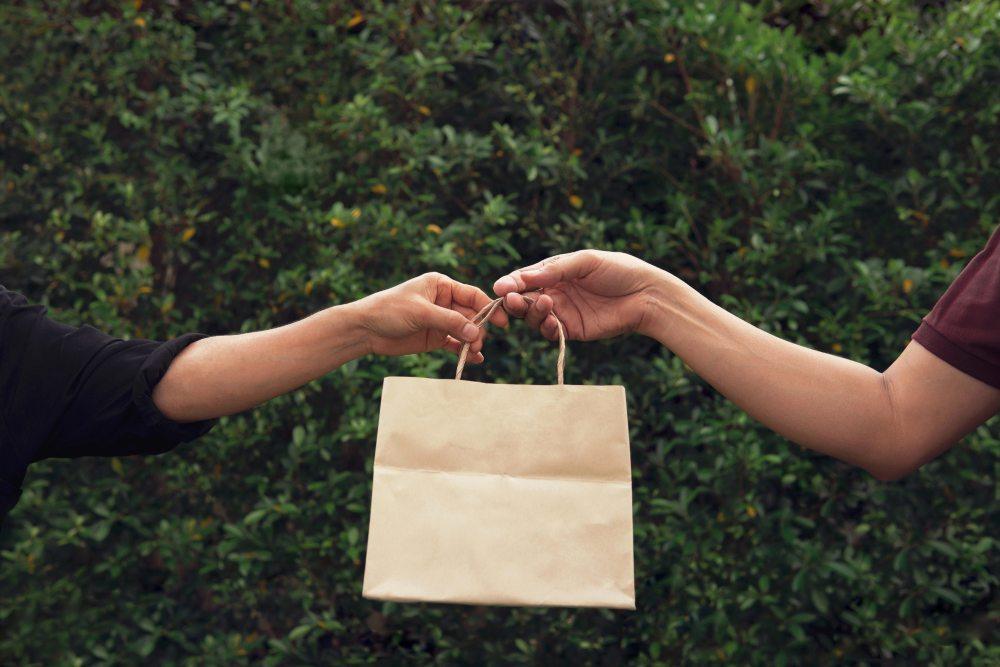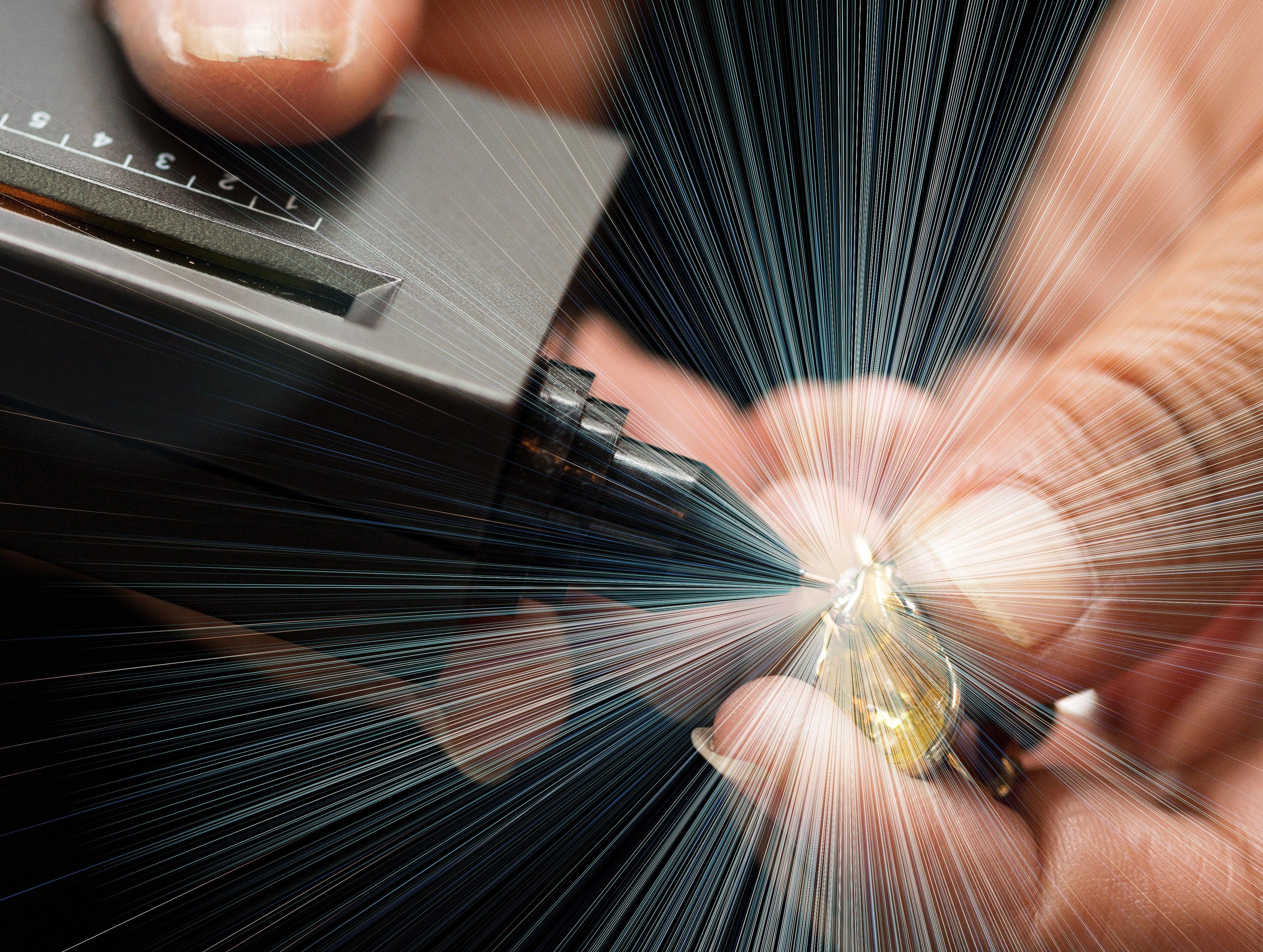
5 Ways to Safely Clean A Lab Grown Diamond Engagement Ring and Other Jewelry
How to Clean Jewelry
It has happened to everyone; you take a look at your engagement ring, that symbol of love and commitment, and realize that the diamond no longer gleams and shines; that there’s a hair stuck in it; and something crusty has gotten caught in one of the tiny corners.
Diamonds, the hardest substance on earth, get pretty dirty rather easily. Water will run off a diamond like Usain Bolt, but the oil in your fingers will stick to it like freshly chewed gum. Smudges and grime build up and up and up until your clear, gleaming, scintillating gem is cloudy, its brightness buried somewhere beneath the accumulation.
Your ring gets a little cleaning in a regular shower, polished on your hand as you run it through your soapy hair, but that's obviously not enough. And that method does nothing for other jewelry that never goes in the bath with you. So how do you bring your jewelry back to gleaming life?
If your engagement ring, and perhaps other jewelry contains lab-grown diamonds, you might be asking yourself some questions:
- Is cleaning a lab lab-grown diamond different from a natural diamond?
- If so, do you need to be worried about cleaning your lab-created diamond
- What can I safely clean my jewelry with?
Cleaning Lab Grown Diamonds versus Cleaning Natural Diamonds and other gems.
Cleaning a lab-grown diamond is exactly the same as cleaning a mined diamond. That is because they are atomically equivalent- they are the same kind of pure carbon crystal. The only major difference is their origin story (not to mention, lab-created diamonds are generally more ethically produced, environmentally friendly, and less expensive than natural diamonds.)
How do you clean sapphire jewelry, and other gemstones?
You don’t have to worry about scratching or damaging a ruby or sapphire engagement ring or jewelry since those corundum crystals have a hardness close to diamonds. Emeralds and aquamarine are a form of beryl crystal, so slightly less hard than corundum, but are also unlikely to be damaged from the cleaning methods we give below. However softer and more porous gems like turquoise, jade, jet, amber and pearls can be damaged by cleaning methods that are safe for diamonds. We will cover cleaning those stones and pieces of jewelry in another article.
How to Clean Gold Jewelry?
We will be discussing cleaning gold jewelry in this article since so much of lab grown diamond jewelry is made with it. In addition, the cleaning methods we propose are good for platinum, and forms of rose and white gold, but are either unrecommended, or unsuited for other metals.
One note on cleaning gold jewelry is that while gold is tough, it is soft, and can be damaged by hard brussels, and scratched by steel wool and other rough cleaning products. In addition, it can react with certain household chemicals, causing it to corrode. Chlorine and bleach are corrosive to gold, and will damage it. Deep cleaners and stain removers such as nail polish remover or acetone can also severely damage and harm gold.
5 ways to clean lab-created diamond jewelry
-
Professional Cleaning + Polishing
-
Household chemicals, such as Windex, or hydrogen peroxide
-
Get a steam or ultrasonic cleaner for yourself at home
-
The steamer on your espresso machine
-
Soap and water
Cleaning Lab Grown Diamond Jewelry

#1. Professional Cleaning
| Pros | Cons |
| Best Cleaning you can get | Cannot be done at home |
| Safest cleaning you can get |
May take more than a day |
| Some jewelers offer it for free | Some jewelers do not offer it for free |
The very best cleaning your jewelry can ever have is by the professionals who made it, or equivalent experts. Most jewelers offer some kind of cleaning service, and some will offer free cleanings with the jewelry you buy from them.
Jewelers, who are cleaning and polishing jewelry all day, have access to high quality professional equipment that the average person has no need to own.
The advantage of this method is that not only will your ring be completely and perfectly cleaned but it will also be polished to an as-new shine and gleam.
How to clean your diamond jewelry at home:
#2. Household Chemicals - the “My Fat Greek Wedding” method

| Pros | Cons |
| DIY |
Not the most comprehensive cleaning |
| Not time intensive | Can backfire if you use the wrong chemicals |
Windex and other mild household cleaners containing ammonia can dissolve some of the dirt and grime on your jewelry without damaging it. Other chemicals such as hydrogen peroxide are also perfectly safe for your jewelry and will remove much or all the oil and grime that sticks to the surface.
How to DIY Clean Your Jewelry With Windex (and other household chemicals)
-
For rings, fill a shot glass with windex and place your ring in it for about 5-20 minutes, or even a bit longer, and then scrub with a toothbrush, que-tip or soft cloth. Size up for larger items.
Word of Advice:
- For 18k gold use a soft toothbrush, or soft cloth, to prevent scratching the surface.
- Safety first: even though windex and similar household cleaners are heavily diluted, it's still prudent to wear protective gloves while using them.
#3. Your Own Personal Jewelry Cleaner
| Pros | Cons |
| DIY | Some machines may be expensive |
| Excellent cleaning results |
A dedicated jewelry cleaner can be great, especially if you have a lot of diamond rings, fine jewelry, or other jewelry to keep clean. There are two main types of jewelry cleaners you can purchase for use at home.
- Steam cleaners are a great way for you to bring your ring or jewelry back to a shining gleam. They produce jets of steam at a high psi so you can safely remove dirt, grime and tarnish.
- You can also purchase your own ultrasonic cleaner for use at home. These cleaners use a special technology that does more than just hot water and detergent alone. Many also have their own special jewelry cleaning solution. These machines are what are used at many jewelry stores for deep cleaning since they clean inside and out.
#4. How to steam clean your engagement ring with an Espresso Machine

| Pros | Cons |
| DIY | Risk of scalding yourself with the hot steam if you aren't careful |
| You won't have to purchase any special equipment |
If you don’t want to make an investment in a dedicated jewelry-cleaning machine, don’t worry, you might have one already. The steamer on your espresso machine is a great alternative for cleaning your lab-created diamond jewelry.
Just remember that steam is very hot and at high pressure, so use rubber-tipped tongs or tweezers to hold your ring or jewelry up to the jet, and wear gloves to protect your hands.
#5. The simplest method: good old soap and water.

| Pros | Cons |
| DIY | Not the deepest possible clean, and will not remove stains or oxidization |
| Safe | |
| Neither time consumer nor costly |
How to clean your jewelry with soap and water in 3 easy steps
-
Fill a glass with water and a little detergent or mild soap, and gently clean by lightly scrubbing your ring or jewelry with a soft-bristled brush, soft toothbrush, cue-tips or soft cloth.
-
For a slightly deeper clean you can also use a little baking soda: add a dash or two of baking soda and a light splash of soap or detergent to a generous amount of water, mixing until dissolved and lightly foamy at the top. Let your ring or jewelry stand in that mixture for a half hour or so, but not much longer. Then rinse- this is important because if you don’t, the next step could damage your ring. The reason for this is that while the baking soda and soap solution will chemically dissolve and soften some or all of the tarnish and dirt, it's abrasive enough that if you scrub, you could scratch the metal. So rinse it off before you get to the next step.
-
Once you have rinsed off the solution with baking soda, use a solution of only soap and water and lightly scrub away grime, grease and dirt with a soft or medium bristle toothbrush or cue-tips.
- Pro tip: if a little bit of cotton or cloth material gets caught and you can’t pull it all out, using a basic lighter, gently touch the flame to the material once dry and burn it out. Being careful, you won’t do any damage to the metal or the diamond.
After cleaning care for your jewelry to keep that everlasting sparkle:

After each of these methods, rub down and polish your lab-grown diamond engagement ring or other jewelry with a clean soft cloth or microfiber cloth. Use cotton balls or cue tips to get the moisture that might be trapped in corners and details.
Everyday care of your jewelry can make a dramatic improvement in keeping it in good condition. Watch how you wear it while engaging in active housekeeping. Though your lab-grown diamonds are incredibly resilient, avoid wearing your gold jewelry while working with chlorine bleach or swimming in chlorinated pools. Avoid unsafe storage by keeping different types of jewelry items in different compartments within your jewelry box.
Getting a Cleaning at Michael Gabriels:
At Michael Gabriels, we offer free cleaning anytime you come in with a product that you bought here. You can also send in products to be cleaned if you live too far away to drop by the office. Just pay for shipping and we will return your jewelry in sparkling as-new condition.
We also offer a hard polish, which goes much further than a regular cleaning. However, we recommend that hard polishing be done sparingly since it removes a layer of metal from the surface.
We hope that these methods of cleaning your ring work well for you and help you to keep your lab-grown diamond engagement ring and other jewelry in perfect condition. Please contact us if you have any questions, which we will gladly answer. You can reach us on our website and via Instagram.



